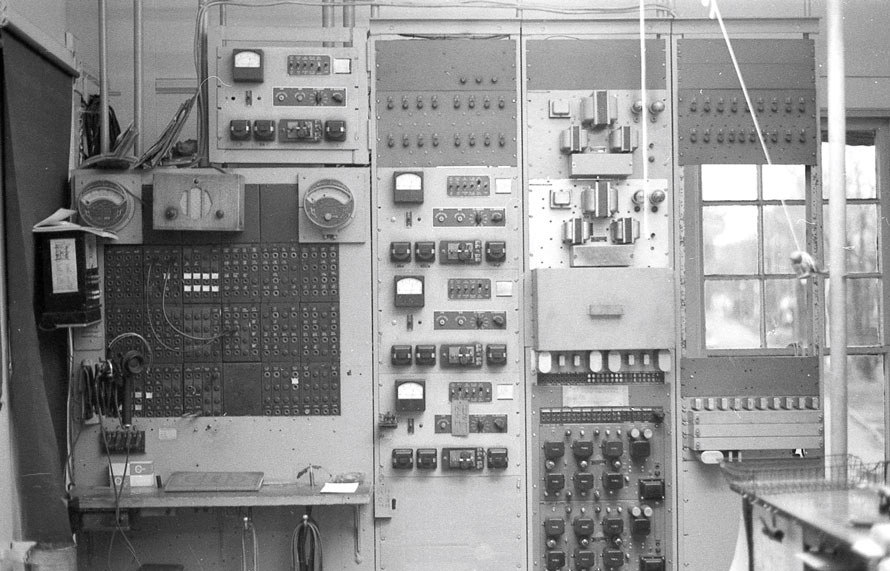
Center left to right above patch board: DC meter, speaker and another DC meter. Before this photo was taken in 1976, between the DC meters was an oscilloscope to tell where a telegraph wire was broken to send out the lineman. This scope had about a 170 mile range and by turning a dial on the front we could go down the wire to find the break (line would spike up at break).
Below left DC meter was our phone ringer. We could plug this into dispatchers and message lines and ring any and all stations.
Below ringer box is phone with headset attached to the ringer.
Don’t remember what the four panels with meters on them were for—maybe teletype lines.
The rest of the panels were most likely rectifiers to change 120 volts AC into 120 volts DC. Telegraph wires carried 240 volts but not much amperage. Our rectifiers would put 120 volts plus or minus on the telegraph wire and the other end of the wire would have the opposite polarity applied, making the 240 volts. The opposite polarity would be put to the ground completing the DC circuit. The wire that ran on insulators on poles along the tracks was a bare copper wire. During rainstorms, if a tree limb was touching a wire, it would ground it out. Therefore telegraph wires used only one wire where a telephone circuit required two wires. The railroads took two telegraph wires to make a dispatchers or message phone line.
Out the window is Empire Street coming from downtown Montpelier which ended at the depot.
In the lower right corner is the table where all out telegraph mainline sounders were mounted. The wire basket on the end is where we put messages for the car distributor and chief train dispatcher.
Larry Lett – Photograph and text Copyright 2021
Great stuff, thanks for the explanation on this apparatus. In the SP yard office of the at Eugene, OR, a large, center-of-the-building room was filled with what appear to this untrained eye as about ten sets of this equipment. The ‘Wire Chief’ position was filled 24/7. No matter the weather, they were there being sure the dispatchers and everybody else could stay in communication.